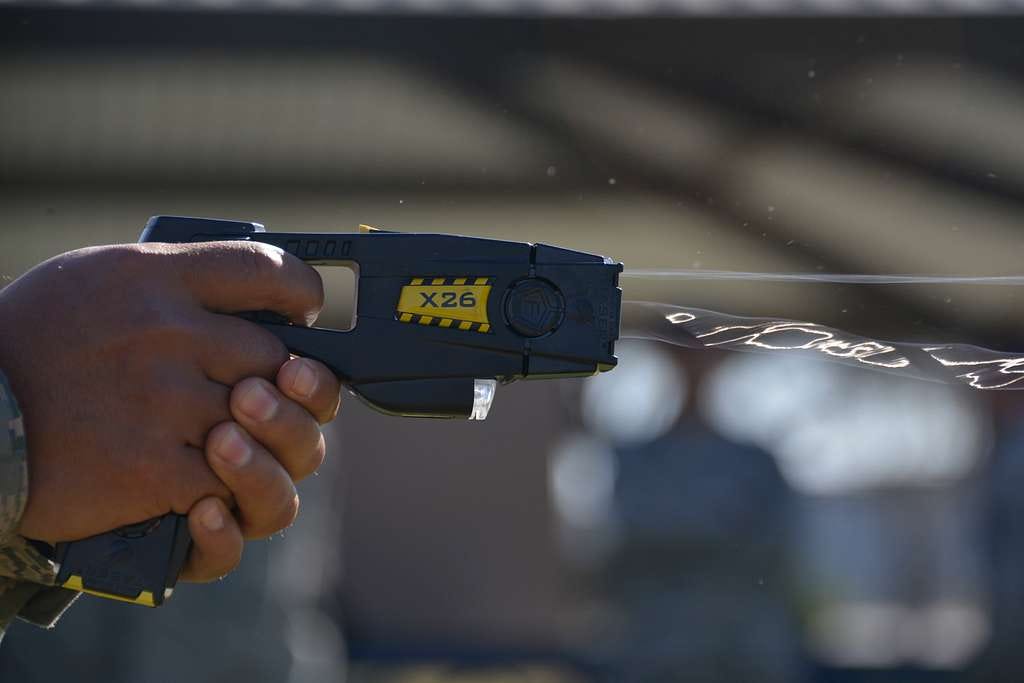Ensuring the safety of a congregation is a top priority for church security teams, and in some situations, using less-lethal options may be more appropriate than resorting to firearms. These alternatives can help de-escalate conflicts and manage threats while minimizing the risk of injury or harm to all parties involved. In this article, we will explore several less-lethal options for church security teams, including collapsible batons, pepper spray, and other alternatives, to provide a comprehensive understanding of their potential benefits and limitations.
Collapsible Batons for Church Security
Collapsible batons are compact, easily concealed, and expandable self-defense tools that can be used by church security team members to deter or neutralize potential threats. These batons are typically made of lightweight and durable materials such as steel or aluminum, which allows for easy handling and maneuverability. They can be extended quickly with a flick of the wrist and can be used to strike an attacker to disarm and disable them. In addition, collapsible batons can also be used to push back a potential threat, creating a safe distance between them and the security personnel. With the increasing need for church security, collapsible batons can provide an effective means of protection for security team members without causing undue harm to potential assailants.
Advantages
Portability: Collapsible batons can be easily carried on a belt or in a pocket, making them a convenient option for church security team members.
Low-profile: Their compact size allows for discreet carry, which can help maintain a welcoming atmosphere in the church.
Non-lethal force: When used properly, collapsible batons can subdue an attacker without causing severe injury or death.
Limitations
Training: Effective use of a collapsible baton requires proper training in striking techniques and target areas.
Close-quarters: Collapsible batons are primarily designed for close-range encounters, which may not be suitable for all situations.
Legal restrictions: Some jurisdictions have regulations regarding the carry and use of collapsible batons, so it is essential to be aware of local laws.
Pepper Spray as a Non-Lethal Weapon
Pepper spray is a widely-used self-defense tool that incapacitates an attacker by causing severe eye, nose, and throat irritation. Pepper spray is a widely-used self-defense tool that can be found in purses, cars and homes. It is a non-lethal option for protection that is legal to carry in most states. It works by incapacitating an attacker by causing severe irritation to the eyes, nose and throat. The effects last from 20-30 minutes giving time for the victim to get to safety or call for help. In addition to being used by the general public for personal self-defense, pepper spray is also used by law enforcement agencies. Since it is a non-lethal option, it can be used as a substitute for deadly force by police officers in situations where it is deemed necessary. Overall, pepper spray is a popular choice for individuals seeking a non-lethal defense mechanism to use against potential attackers.

Advantages
Non-lethal: Pepper spray is designed to temporarily incapacitate an attacker without causing lasting harm.
Ease of use: Most pepper spray devices are easy to use, requiring only minimal training to operate effectively.
Range: Pepper spray can be effective at distances of up to several feet, allowing security team members to maintain a safe distance from potential threats.
Limitations
Environmental factors: Wind, rain, and other environmental factors can impact the effectiveness of pepper spray.
Risk of self-contamination: There is a risk of self-contamination if the spray is not used correctly or if the user is too close to the target.
Varied effectiveness: The effectiveness of pepper spray can vary depending on an individual's sensitivity to the active ingredient, as well as the specific product used.
Tasers (electro-muscular disruption)
A taser, also known as an electro-muscular disruption device, is used by law enforcement officers to temporarily incapacitate or immobilize a person. A taser typically fires two small darts, which attach to the person's skin or clothing and deliver an electric shock that disrupts the communication between the brain and the muscles. The electric shock can last anywhere from a few seconds to several minutes, depending on the duration of the taser activation. A taser can deliver up to 50,000 volts of electricity, but the amperage is low enough that it is unlikely to cause serious harm or injury. Tasers are considered safer and less lethal than firearms, as they provide officers with a way to control a situation without resorting to deadly force. However, tasers can still have serious consequences if not used properly.

Advantages:
Non-lethal: Stun guns and Tasers are designed to incapacitate an attacker without causing lasting harm.
Deterrent effect: The sound and sight of an activated stun gun or Taser can sometimes be enough to deter a potential attacker.
Limitations:
Close-quarters: Stun guns require direct contact with the attacker, while Tasers
have a limited range, typically around 15-25 feet, making them most effective in close-quarters situations.
Training: Proper training is essential for the safe and effective use of stun guns and Tasers, including understanding the target areas and potential risks.
Legal restrictions: Some jurisdictions have regulations regarding the carry and use of stun guns and Tasers, so it is essential to be aware of local laws.
Training and Preparedness for Less-Lethal Options
Proper training and preparedness are crucial when implementing less-lethal options for church security teams. Team members should receive training in the use, maintenance, and legal aspects of their chosen less-lethal tools, as well as learn how to respond effectively in various situations.
Regular practice and drills can help ensure that church security team members are comfortable with their less-lethal tools and can deploy them effectively under pressure. Training resources, such as those provided by Christian Warrior Training can be invaluable in preparing church security teams to make the right decisions when faced with potential threats.
Legal Issues For Church Security Teams
Church security teams are becoming increasingly necessary in today's unpredictable world. Although they are meant to protect the congregation and its property, church security teams must be mindful of legal issues to avoid potential harm and litigation. In most states, it is illegal for non-law enforcement personnel to use force, unless it is in self-defense, defense of others, or defense of property. This means that certain security tools, such as batons, tasers, pepper spray, and impact weapons, can only be carried and used if permitted by state or local laws. Even if such tools are permitted, security team members must undergo proper training and certification. Also, security teams must be cautious about the use of force as it must be proportionate to the threat level. Otherwise, it may be considered excessive force, resulting in legal action against the church and its security team members. Therefore, being mindful of these legal issues is critical for the safety and protection of both the congregation and the security team.
Conclusion
Less-lethal options, such as collapsible batons, pepper spray, and other alternatives, can provide valuable tools for church security teams to address potential threats while minimizing harm to all parties involved. By understanding the advantages and limitations of these tools, and investing in proper training and preparedness, church security teams can better protect their congregations and maintain the sanctity of their worship spaces.
As always, it is important for church security teams to stay informed about local laws and regulations governing the use and carry of less-lethal self-defense tools and to prioritize the safety and well-being of their congregations in all situations.






For pepper spray: Gel? Or stream spray?
I'm looking at Sabre 3 in one stream (contains tear gas), or 2-in-one gel (non tear gas). I know the gel is less likely to contaminate the surrounding area (for instance, the kids ministry area), but requires better aim, and doesn't contain the additional agent.
I've bought both, but am leaning towards the gel. What are everyone else's thoughts?
Great content, Thank you! Could you recommend a pepper spray brand and model you have experience with ?